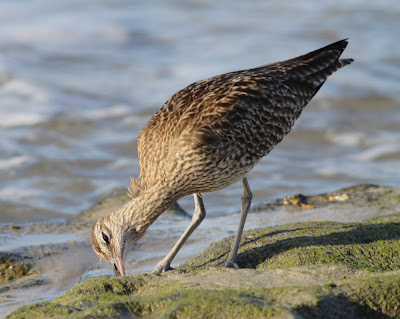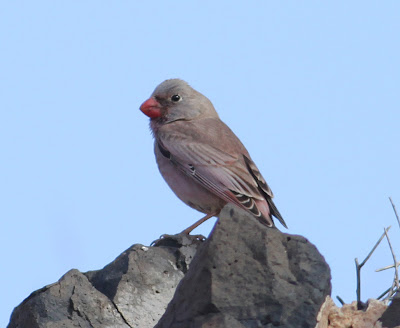There was time for a quick look at Pilling and Conder Green early on but when the wind and rains arrived I was back home for a late tea-and-toast breakfast. Too soon maybe as the sky then cleared leaving a bright but very windy and still showery day.
Near Lane Ends were a good number of post-breeding Lapwings, 25+ adults together with a small number of obvious juveniles, spiky-crowned and brightly edged feathers, but birds now well on the way to adulthood. I checked out a pair of Oystercatchers which seemed to be doing the business again after the original nest was rolled by Hi-Fly's farming operations; three eggs again in the sprouting maize crop so the oyks should be fine this time providing the Carrion Crows or mammal predators don't intervene.
Lapwing juvenile
Oystercatcher nest
Oystercatcher
I stopped briefly at the plantation where 2 Reed Warblers, a Blackcap and a Reed Bunting were in song and 2 Grey Herons out on the marsh.
At Conder Green the cool, windy conditions meant good numbers of hirundines and Swifts were dashing about the hedgerow again to give counts of 25+ Swift, 20+ House Martin, 15 Swallow and 6 Sand Martin.
Late June can be when waders begin returning to coastal haunts and there seemed to be higher numbers of Redshank today with 30+ noted, although just 2 Black-tailed Godwit and 1 Curlew was consistent with recent sightings here. Fifteen Oystercatcher and 6 Lapwing was also normal.
Wildfowl - 3 Wigeon, a Shelduck with 5 small chicks, 14 Tufted Duck and the unseasonal Goldeneye again. The origins of the latter is a matter of some speculation as Goldeneyes normally feature in this area between October and March, the likelihood being that this immature male did not return north last autumn. Immature males do not attain their full black and white male plumage until their second winter. Whatever, the bird certainly appears wild enough and loafs about the pool with the tufties.
Goldeneye
Another returnee this morning was a Little Egret feeding amongst the Redshank and Mallards in the Conder channel. Unfortunately our UK Little Egrets are not as accommodating towards photographers as the species is in other parts of the world, in this case Fuerteventura.
Little Egret
Passerines this morning - 2 Tree Sparrow, 1 Pied Wagtail, 2 Greenfinch, 4 Goldfinch.
Another Bird Blog links today to Camera Critters and Anni's Blogspot .


































































































